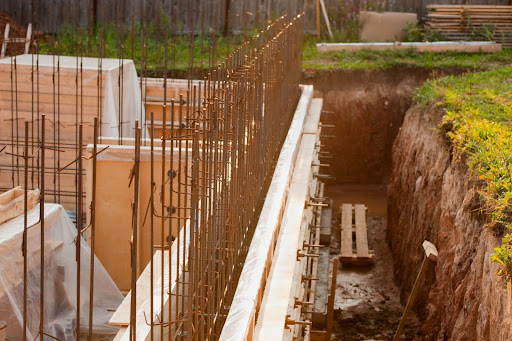Is Formwork Plywood Good for Outdoor Projects?
Film faced plywood stands out as the best choice for outdoor concrete form applications in Australia. This plywood formwork features a phenolic resin coating that creates a waterproof barrier, making it ideal for extended outdoor exposure.
F17 plywood offers superior structural performance compared to F14 grade plywood for demanding outdoor projects. The higher grade provides better load-bearing capacity and moisture resistance when used as concrete form plywood.
Different formwork types suit various outdoor conditions:
- Film faced plywood: Best weather resistance, up to 15 reuse cycles
- MDO (Medium Density Overlay): Good moisture protection, smoother concrete finish
- Phenolic plywood: Excellent chemical resistance, ideal for harsh environments
F14 plywood works well for lighter outdoor formwork applications where budget considerations matter. The phenolic film coating on quality formply Australia products prevents water penetration and concrete adhesion, extending service life significantly compared to standard plywood options.
How Long Will Formply Last Outside?
The lifespan of plywood varies greatly depending on the type of formwork used and the environmental conditions it is exposed to. Film-faced plywood generally offers 10-15 reuse cycles for outdoor use, while standard phenolic-coated boards can achieve 5-8 cycles. MDO plywood falls somewhere in between with 7-12 cycles.
The Impact of Product Type on Concrete Formwork Durability
The type of product used has a direct effect on how durable concrete formwork will be. Plywood that is graded F17 and has a coating of phenolic resin is able to withstand the harsh weather conditions in Australia better than its F14 alternatives. The quality of the lamination process also plays a role in determining how well the board can maintain its structural integrity through multiple wet-dry cycles.
How Usage Conditions Affect Lifespan
The lifespan of plywood can vary greatly depending on the specific conditions in which it is used:
- UV exposure: When exposed to direct sunlight, surface coatings can degrade more quickly.
- Moisture levels: The strength of the adhesive bond between the layers of plywood is affected by moisture levels.
- Temperature fluctuations: Expansion and contraction stress is caused by changes in temperature.
- Handling practices: The condition of the edges can be impacted by how the formwork is stripped and stored.
Construction sites that have proper storage protocols and handle formwork carefully can extend the number of times it can be reused by 30-40% compared to sites with poor management practices.
Is Formply Water-Resistant?
Water-resistant plywood achieves its protective qualities through specialised surface treatments and adhesive systems. Phenolic coating creates a hard, impermeable barrier that prevents moisture penetration into the wood substrate. This resin-soaked fibre surface forms during manufacturing when phenolic resin impregnates the outer veneer layers under heat and pressure.
Medium Density Overlay (MDO) provides another water-resistant option through its resin-impregnated paper surface. The overlay bonds permanently to the plywood core, creating a smooth, non-porous finish that resists water absorption.
WBP (Weather and Boil Proof) glue serves as the foundation of water resistance in quality formwork plywood. This waterproof adhesive maintains bond strength even under prolonged moisture exposure and temperature cycling. The adhesive prevents delamination between plywood layers, which would compromise structural integrity.
When you buy formply for outdoor applications, verify both surface treatment type and adhesive specification. Film-faced varieties with phenolic surfaces and WBP adhesive offer superior moisture protection compared to untreated alternatives.
What Factors Influence Formply Lifespan?
Environmental exposure poses the greatest threat to formwork plywood durability. UV radiation breaks down surface coatings and weakens wood fibres, whilst moisture penetration causes swelling, warping, and delamination. Temperature fluctuations create expansion and contraction cycles that stress joints and adhesive bonds.
The lamination process determines structural integrity through adhesive selection and pressing techniques. High-quality phenolic resins and WBP glues create stronger bonds between plywood layers. Cross-grain construction distributes loads evenly, preventing splitting under concrete pressure.
Surface treatments significantly impact longevity:
- Film-faced plywood provides superior moisture protection
- MDO overlays resist UV damage and concrete adhesion
- Phenolic coatings create waterproof barriers
Maintenance practices directly affect reuse cycles. Proper cleaning removes concrete residue that accelerates deterioration. Edge sealing prevents moisture ingress at vulnerable cut surfaces. Storage in dry, covered areas protects against weather damage between uses.
How Can I Increase the Lifespan of Formwork Plywood?
Proper formwork plywood maintenance extends service life significantly beyond standard expectations. Edge sealing with waterproof paint or marine-grade wax prevents moisture ingress at vulnerable cut edges where the laminated layers meet.
Essential maintenance practices:
- Clean concrete residue immediately after each pour using wire brushes and appropriate solvents
- Inspect for damage before storage, replacing damaged panels to prevent further deterioration
- Store flat with adequate ventilation between sheets
- Apply release agents consistently to prevent concrete adhesion
Concrete plywood used for plywood curved concrete forms requires additional attention at bend points where stress concentrates. Regular inspection of these high-stress areas identifies potential failure points early, allowing for preventive repairs rather than complete panel replacement.

